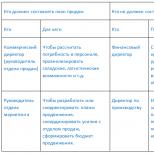Deposit - what is it
Money is the foundation of modern life. Every step of a person today is associated with financial transactions. Receiving a salary or pension, buying or selling goods, treatment or training - all these actions are accompanied by the receipt / transfer of monetary rewards. It is not surprising that such concepts as "deposit", "credit", "stock", "check", "payment card" have become familiar even to children. It seems that everything is very simple and straightforward:
- a deposit is a cash deposit with a bank at interest;
- credit is borrowed money;
- a share is a security confirming the right of its owner to a part of the property and to receive dividends;
- check and payment card - means of payment.
But in fact, each financial instrument has a deep economic essence and a complex structure, which only specialists can thoroughly understand. Let us dwell in more detail on the question of what a bank deposit is, what types of deposits are there and their characteristics. Also, let's figure out what deposit rates are, and what are the risks and benefits for depositors?
A brief excursion into history
Historical information will help you better understand what a deposit is and grasp the very essence of deposits.
In ancient Greece, temples were the safest places, so residents often turned to the priests with a request to save their wealth from thieves and robbers. Values were put into clay pots, on which the name of the owner was written; the pots were safely hidden in the hiding places of the temple complexes. At the same time, the Greeks paid some reward to the priests for saving their treasures. The owner could pick up his pot at any time. It was very reminiscent of modern depositories in banks. But gradually the relationship developed and became more complicated, contracts were concluded between the owners and the priests, according to which the priests could use the values transferred to them for storage, invest them in profitable enterprises, the profit from which was shared between the custodian and the owner of the funds.
Gradually, this practice of relations spread to neighboring states. Legal registration of such transactions was found in 350 BC. NS. in ancient Rome. It was here that the first special institutions appeared, which offered to take citizens' money for saving on certain conditions. All deposits were recorded in accounting books, and the concept of "interest" appeared.
But it was not until the 12th century that institutions resembling modern banks emerged in Western Europe. They already provided a fairly wide range of services: they not only accepted money for safekeeping, but also issued loans and carried out settlements between clients. This business turned out to be very profitable, and the number of merchant bankers grew rapidly. In the 15th century, in all large European cities, deposits were accepted from the population, at the expense of which loans were issued. Also, the money of the population was used for the development of agriculture and production. This is how the concept of investment was born.

In Russia, the first deposits were accepted in 1889.
For millennia, the essence of the deposit has not changed. Both in the ancient and in the modern world, a deposit is funds (money or other valuables) transferred to the bank for preservation on terms of urgency, payment and repayment. In simple words, a deposit is money that a client lent to the bank for a while in order to get profit in the form of interest.
Characteristics of deposits
What is a deposit (deposit), we have already found out, now let's figure out what characteristics this financial instrument has:

Both individuals and legal entities have the right to issue a deposit. Any deposit must be drawn up in a written agreement between the bank and the client. The deposit can act as collateral for the loan.
Risks and benefits for depositors
Bank deposit - what is it from the point of view of the population and banks? For a depositor, this is, first of all, an opportunity to save their money from thieves and annoying borrowers, as well as an opportunity to receive additional income, and for financial institutions it is an investment tool. The Bank uses borrowed funds to issue loans, form reserve funds and equity capital, invest in shares and other securities, as well as in business projects. Thus, the financial institution is interested in attracting as many depositors as possible.
Often in pursuit of clients they are promised "mountains of gold", which does not always correspond to the truth. They will help you not to fall for the bait 5 golden rules:

Despite the presence of risks, deposits have undoubted advantages:
- “Money should bring money” - the old wisdom says, and a deposit is a stable source of passive income;
- you do not need to be afraid of thieves and you do not have to lend your hard-earned money to anyone;
- you can collect for a large purchase, a long-awaited trip or getting an education;
- the depositor can apply for a loan at preferential interest rates.
Now it is clear what a bank deposit is, and what are the main characteristics and advantages it has.





